 |
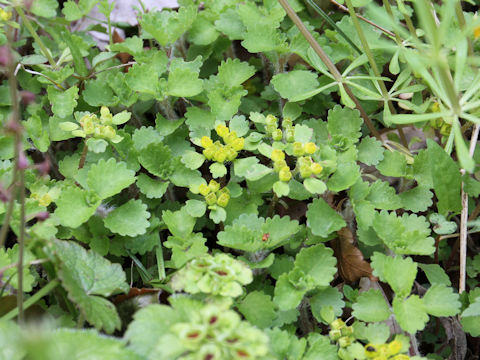

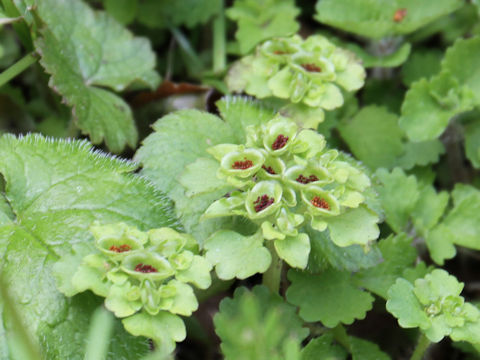

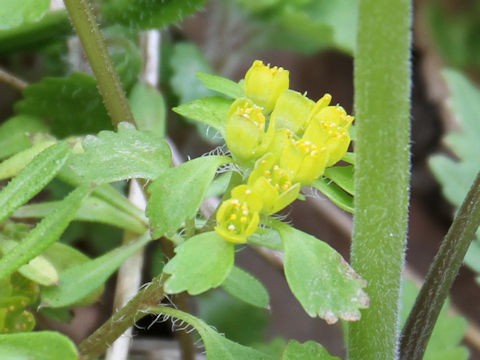

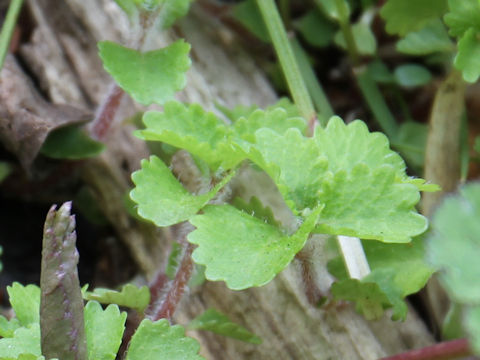

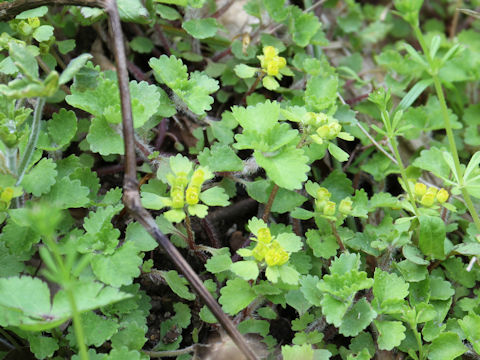

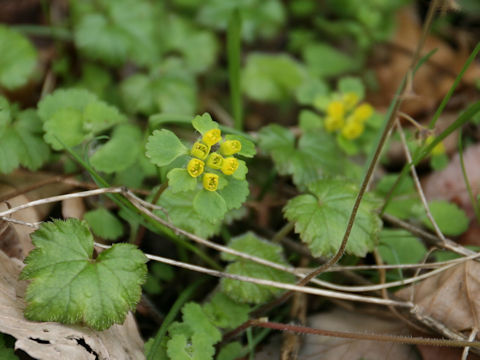

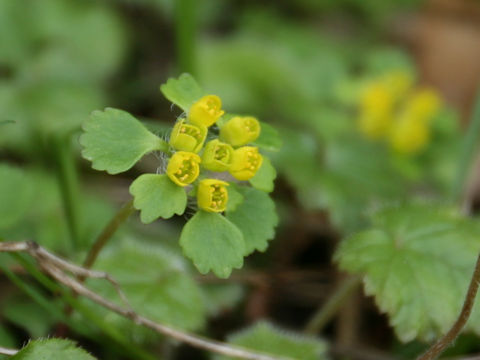

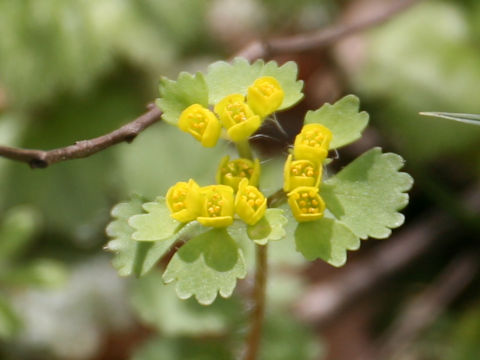

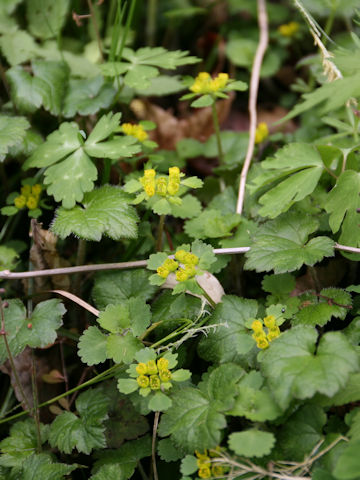

|

|
íªÌ{BAknûì©çlEãBɪzµÄ¢Ü·BRnÌJ¢Ì¼nɶ¦A³ÍT`POZ`ÉÈèÜ·Bo}Í·LÑAFÌîÑÉííêÜ·BtÍî~`ÅAX`PVÂÌÛ¢ª èÜ·BR©çT²ëAÔsðLεĩF¢Ôð穹ܷBäÞÍNâ©È©FðµÄ¢ÄAäÓôÐͼ§µÜ·B
|

|
LmV^ÈlRm\E®Ì½NÅAw¼Í Chrysosplenium pilosum var. fulvumBp¼Í èܹñB
|

|
"Oo-kogane-nekonome-so" (Chrysosplenium pilosum var. fulvum) belongs to Saxifragaceae (the Saxifrage family). It is a perennial herb that is distributed from southern Tohoku district of Honshu to Shikoku and Kyushu in Japan. This herb grows in montane streamside marshes and can reach 5-10 cm in height. The runners elongate long and covered with white soft hairs. The leaves are round fan-shaped with 9-17 round serrate margines. The yellow flowers come on the flowering stalks from March to May. The anthers are bright yellow and the calyx lobes are erect.
|

|
[ãEP`S] {é§åäs¾æØÀÉÄA2020N0430úBeB
[T`VEº] ¯ãÉÄA2021N0418úBeB
|








